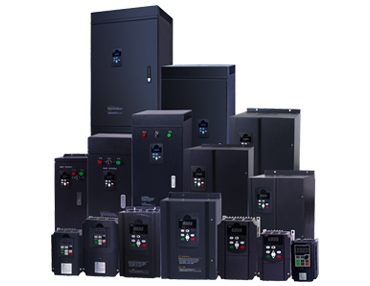Time:2019.01.04 15:29 View: Anthor:admin
Back
Users can choose different types of inverters according to their actual process requirements and applications. Pay attention to the following points when selecting the inverter:
1. Select the inverter according to the load characteristics.
2. When selecting the inverter, the actual motor current value should be used as the basis for the inverter selection. The rated power of the motor can only be used as a reference. In addition, it should be fully considered that the output of the inverter is rich in high-order harmonics, which will deteriorate the power factor and efficiency of the motor. Therefore, compared with the power frequency grid power supply, the motor current will increase by 10% and the temperature rise will increase by about 20%. Therefore, when selecting the motor and the inverter, this situation should be taken into consideration, and a margin should be left to prevent the temperature rise from being too high and affect the service life of the motor.
3. If the inverter is to run with a long cable, measures should be taken to suppress the influence of the cable on the ground coupling capacitor to avoid insufficient output of the inverter. Therefore, the inverter should be amplified by one or two gears or an output reactor at the output of the inverter.
4. When the inverter is used to control several motors in parallel, it is necessary to consider the total length of the cable from the inverter to the motor within the allowable range of the inverter. If the specified value is exceeded, enlarge the first or second gear to select the inverter. In addition, in this case, the control mode of the inverter can only be V/F control mode, and the inverter can not realize over-current and overload protection of the motor. In this case, fuses should be added on each motor side to achieve protection.
5. For some special applications, such as high ambient temperature, high switching frequency, high altitude, etc., this will cause the inverter to derate, and the inverter needs to be amplified by one gear.
6. When using a frequency converter to control a high-speed motor, since the reactance of the high-speed motor is small, more high-order harmonics are generated. These higher harmonics will increase the output current of the inverter. Therefore, when selecting a frequency converter for a high-speed motor, it should be slightly larger than that of a normal motor.
7. When the inverter is used in a pole-changing motor, pay full attention to the capacity of the inverter so that its maximum rated current is below the rated output current of the inverter. In addition, when performing the pole number conversion during operation, the motor should be stopped first, otherwise the motor will be idling, which will cause damage to the inverter.
8. When driving the explosion-proof motor, the inverter does not have an explosion-proof structure, and the inverter should be placed outside the hazardous area.
9. When using a frequency converter to drive a geared motor, the range of use is limited by the way the gear is rotated. When the lubricating oil is lubricated, there is a limit in the low speed range; in the high speed range exceeding the rated speed, there is a danger that the lubricating oil will be used. Therefore, do not exceed the maximum speed tolerance.
10. When the inverter drives the wound rotor asynchronous motor, most of the existing motors are used. Compared with the ordinary squirrel cage motor, the winding motor has a small impedance of the winding motor winding. Therefore, an overcurrent trip due to ripple current is likely to occur, so a converter that is slightly larger than the normal capacity should be selected. Generally, the winding motor is mostly used in the case where the flywheel torque GD2 is large, and more attention should be paid to setting the acceleration/deceleration time.
11. When the inverter drives the synchronous motor, it will reduce the output capacity by 10%-20% compared with the commercial frequency power supply. The continuous output current of the inverter is greater than the product of the synchronous motor rated current and the synchronous pull-in current. .
12. For a load with a large torque ripple such as a compressor or a vibrating machine, and a peak load with a hydraulic pump, if the inverter is selected according to the rated current or power value of the motor, overcurrent protection may occur due to peak current. Action phenomenon. Therefore, you should understand the power frequency operation and select the inverter with a rated output current greater than its maximum current.
13. When the inverter drives the submersible pump motor, because the rated current of the submersible pump motor is larger than the rated current of the normal motor, when the inverter is selected, its rated current is greater than the rated current of the submersible pump motor.
14. When the inverter controls the Roots blower or special blower, since the starting current is very large, it is necessary to pay attention to whether the capacity of the inverter is large enough when selecting the inverter.
15. When selecting a frequency converter, be sure to check whether its protection level matches the situation on site. Otherwise, dust and water vapor on the site will affect the long-term operation of the inverter.
16. Single-phase motors are not suitable for inverter drives.
Address: 7F Bldg #E, North Area No. 8 Shangxue Technology Industrial city,Shenzhen,China
Company email: szqinverter@foxmail.com
My WhatsApp: +86 13923476670

copyright ©深圳市玮肯电气技术有限公司 版权所有 粤ICP备13028075号-3
Web Map 丨